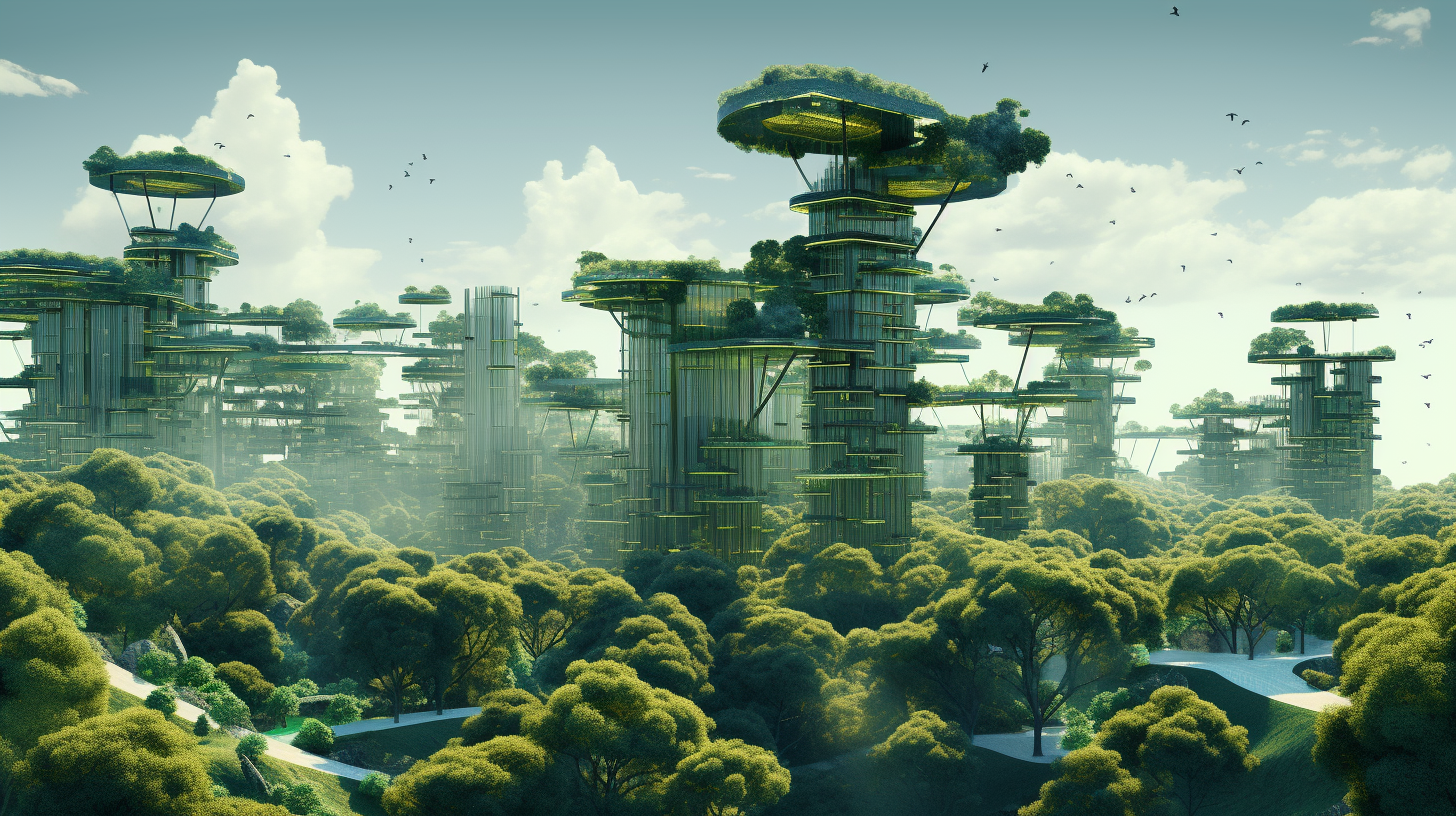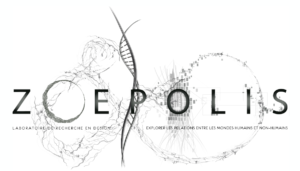
Problem Statement
Modern buildings are fortresses holding nature at bay, reflecting Dualist philosophies separating humans from nature. Our current Anthropocentric notion of “nature” as something “out there” and separate from culture has created a metabolic rift1 within our urban and architectural landscapes, obscuring the ravaging of the earth. Resources are shipped from across the globe, feeding advertising-fueled consumption – the flow from global South to North: an extension of colonialism robbing the developing world of natural wealth2-4. Invaders with no connection to the land sever the ties of indigenous peoples by cultural genocide. Urbanization is replacing natural ecosystems that were operating within capacity limits with built environments predicated on overconsumption.
Hypothesis
To reconceptualize building metabolism, we turn to natural systems for inspiration, seeking to learn from symbiotic relationships where organisms thrive through cooperation and mutual reciprocity. Importantly, resource flows must be considered across boundaries: it is in the play of dynamic and overlapping boundary conditions where novel design methods arise. This framework advances new materialism theories of envisioning material flows, speculative realism, and the innate understanding of Animist philosophies.
State-of-the-Art

Most metabolic building concepts are anthropocentric, measuring resource flows for humans5 but ignoring the surrounding ecosystem. The metabolic city of 1960s Japan mimicked human metabolism, modelled as one organism6. As critically noted, this movement was “limited to a few isolated buildings by individual architects acting independently” 7.
Recent proposals focus on metabolic systems as information processing systems, reflecting the flow of energy, information and matter, but perpetuate the human-centric model where the environment is simply a singular, exterior “boundary” to the system8,9.
Post-human architectural studies explore architecture for the natural environment; for instance, Senthil10 provides an intriguing study of architecture for the cohabitation of humans and non-humans. The Zoepolis exhibition11 stands out as an example of inter-species design, which can be used to extend the metabolic model to a symbiotic model. The Sunflower House by Koichi Takada hints at a more holistic symbiotic metabolic architecture, entering into a relation of reciprocity with the local ecosystem.12
In the same vein, Urban Metabolism has recently been explored for a circular economy, establishing material flow boundaries within urban landscapes13.; while urban farming exemplifies methods to contain metabolic flows within geographies, reducing resource consumption and waste14.
Proposal

We must renegotiate our understanding of boundaries to implement metabolic thinking within a sustainable design process. Two key concepts in our proposal explore the ever-shifting relationship between carrying capacities15 and boundaries of buildings, expressed at three scales. We argue that architectural sustainability consists of eco-technical building solutions, new materials, and eco-labelling, rarely referring to social or cultural settings and practices. Critically, “sustainability” would benefit from building metabolism as a system of political, social, and physical structures that are resilient to spatial and organisation patterns and adaptable to change.16
Inspired by mycorrhizal networks, we envision metabolic buildings as symbiotic structures, providing space and habitat to regenerate and enhance living systems, formalised as a series of dynamic porous boundaries forming ecotones from a central minimal shelter providing comfort and protection through productive symbiotic areas of healthy habitats for local flora and fauna. We enter into a reciprocal relationship of abundance by increasing the commons and extending it to non-humans. Driven not only by Anthropocene obligations but also by our species’ survival.
In our definition, metabolism is a system of physical and metaphysical porous boundaries that provides resources, is adaptable and dynamic, and reestablishes sustainable consumption within an enhanced carrying capacity. Significantly, it extends beyond the human habitat (building) to an ecological boundary. Energy production and demand are explicit (calculable), and the carrying capacity of the local boundary becomes a dynamic shared property, not a “sustainable goal.”
Designing with spatial and temporal boundaries for resources drives us to bring consumption back within manageable levels, necessitating the enhancement of ecosystems. Limiting the space reserved solely for human occupants to sufficient levels serves to drastically reduce consumption requirements – scalar localization becomes critical.

We define three architectural boundaries that inform each building design narrative. This framework allows designers to understand the carrying capacity and implication within each progressive boundary:
- Shelter – both a consuming and productive space for inhabitants’ specific needs (waste heat, solar, water). The energy production potential of every shelter and habitat depends on its geographical properties (soil, weather, density, etc).
- Center to facade
- Metric: solar, waste, heat, water, food, and material consumption and production; systematic ability to interact and share resources
- Symbiotic Habitat – fuzzy yet distinguished shared space for human, atmospheric, ecological, and species interaction to facilitate symbiosis. This is a biodiversity-enhancing space. Here, abundance from one identifiable shelter can flow towards another via this boundary. Emerging technologies leveraging non-human agents enhance sharing capabilities.
- Facade to facade
- Metric: biodiversity levels, green growth, species-specific design
- Local Outer Boundary – a holistic boundary in which previous boundaries are embedded (local self-supporting system). At this scale, energy production is limited to a topometric boundary, which allows for calculating such a boundary’s carrying capacity. In ecological terms, carrying capacity is dynamic: the oscillations in energy production and demand of its inhabitants regulate their quantities (how many inhabitants per species).
- City edge to city edge
- Metric: self-sustaining percentage, carrying capacity
Interestingly, these boundaries are dynamic (they grow and shrink in space and time) within a limit. Inhabitants’ identities in a local boundary are territorial, energetic, discrete, and quantifiable. With this understanding, designers can address challenges at each scale, localising the capacity of resources within reach. For instance, if a particular subset of shelters lacks solar resources, symbiotic habitats are prioritised to increase the capacity and production of local solar flow. Conversely, increasing individual shelters indefinitely limits symbiosis and resource extraction and creates an undesirable competitive game.
Conclusion
Metabolic buildings bring us full circle, standing within our cities against the tide of overconsumption and colonisation. Networks of metabolic buildings with overlapping mutual and symbiotic boundaries build resiliency. Once we realise we live within these fuzzy zones, we design in solidarity. Boundaries imply balance and productive interactions across species, atmosphere, and aesthetics. The dualistic and anthropocentric concept of nature is replaced by that of symbiotic metabolism.

Bibliography
1. Bellamy, J. & Foster, J. B. Marx’s Theory of Metabolic Rift?: Classical Foundations for Environmental Sociology 1. 105, 366–405 (2013).
2. Sullivan, D. & Hickel, J. Capitalism and extreme poverty?: A global analysis of real wages, human height, and mortality since the long 16th century. World Dev 161, 106026 (2023).
3. Hickel, J., Sullivan, D. & Zoomkawala, H. Plunder in the Post-Colonial Era?: Quantifying Drain from the Global South Through Unequal Exchange, 1960 – 2018 Plunder in the Post-Colonial Era?: Quantifying Drain from the. New Political Economy 0, 1–18 (2021).
4. Hickel, J., Dorninger, C., Wieland, H. & Suwandi, I. Imperialist appropriation in the world economy?: Drain from the global South through unequal exchange, 1990 – 2015. Global Environmental Change 73, 102467 (2022).
5. Codoban, N. & Kennedy, C. A. Metabolism of Neighborhoods. J Urban Plan Dev 134, 21–31 (2008).
6. Pernice, R. Metabolism Reconsidered Its Role in the Architectural Context of the World. Journal of Asian Architecture and Building Engineering 3, 357–363 (2004).
7. Russell, Stanley. “Metabolism Revisited: Prefabrication and Modularity in 21st Century Urbanism.” (2008).
8. Besserud, K., Sarkisian, M., Enquist, P. & Hartman, C. Scales of Metabolic Flows: Regional, Urban and Building Systems Design at SOM. Architectural Design 83, 86–93 (2013).
9. Pauliuk, S. & Müller, D. B. The role of in-use stocks in the social metabolism and in climate change mitigation. Global Environmental Change 24, 132–142 (2014).
10. Senthil, A. Cohabitation: Subverting Anthropocentrism in Architectural Discourse. in EasyChair Preprint (2022).
11. Care, M. et al. Zoepolis. Non-anthropocentric design as an experiment in multi-species care. 8, 1–7 (2019).
12. https://www.designboom.com/architecture/sunflower-house-carbon-positive-concept-koic
hi-takada-architects-01-07-2021/ – Accessed on December 1, 2023
13. Fernandes, J. & Ferrão, P. Urban Metabolism-Based Approaches for Promoting Circular Economy in Buildings Refurbishment. Environments 10, 13 (2023).
14. Drottberger, A., Zhang, Y., Yong, J. W. H. & Dubois, M. C. Urban farming with rooftop greenhouses: A systematic literature review. Renewable and Sustainable Energy Reviews 188, 113884 (2023).
15. Delanda, M. Philosophy and Simulation: The Emergence of Synthetic Reason. 65-73 (2011).
16. Schalk, M. The Architecture of Metabolism. Inventing a Culture of Resilience. Arts 3, 279–297 (2014).

